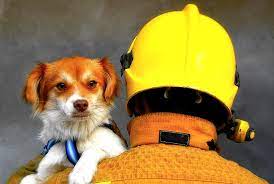
Our pets are cherished members of our families, bringing us immense joy, comfort, and unconditional love. As responsible pet owners, it is crucial to consider their safety in every aspect of our lives, including potential emergencies like fires. The thought of our beloved pets being trapped in a fire is a distressing one, but by taking proactive measures, we can significantly reduce the risks and protect their lives. In this article, we will explore essential steps you can take to safeguard your pets from a fire, ensuring their safety and well-being.
Understanding the Risks
Fire hazards in the home
a. Identifying potential fire hazards such as faulty wiring, unattended flames, or flammable materials.
b. Regularly inspecting and maintaining electrical appliances, cords, and outlets.
c. Keeping flammable substances like gasoline and cleaning agents safely stored away from pets’ reach.
Pet-related fire risks
a. Recognizing potential hazards specific to pets, such as chewed electrical cords or knocking over candles.
b. Understanding the dangers of leaving pets unattended around stoves, fireplaces, or space heaters.
Fire Preparedness and Prevention
Install and maintain smoke detectors and fire alarms
a. Ensuring you have smoke detectors installed in crucial areas of your home.
b. Testing smoke detectors regularly and replacing batteries as needed.
c. Opting for interconnected smoke detectors to provide early warning throughout the house.
Develop a fire escape plan
a. A Texas Fire Safety business owner told me creating a detailed fire escape plan that includes all family members, including pets.
b. Designating specific routes and meeting points outside the home.
c. Practicing the escape plan regularly to familiarize pets with the process.
Pet-proof your home
a. Safeguarding electrical cords by using cord covers or placing them out of pets’ reach.
b. Securing open flames with pet-proof barriers or using flameless alternatives.
c. Storing flammable materials securely in locked cabinets or high shelves.
Use pet alert stickers
a. Placing pet alert stickers near your home’s entrance to inform firefighters of the presence of pets.
b. Including the types and number of pets you have, as well as your contact information.
Ensuring Pet Safety during a Fire
Keep pets near entrances
a. Designating specific areas where your pets can stay when you’re not home.
b. Keeping them near entrances and away from potential fire sources.
c. Ensuring easy access for firefighters to locate and rescue your pets if necessary.
Use pet carriers or leashes
a. Keeping pet carriers easily accessible for a quick and safe evacuation.
b. Training your pets to be comfortable with carriers or leashes.
c. Placing a leash near the door as a reminder during an emergency.
Emergency pet supply kit
a. Assembling a pet emergency kit with essentials like food, water, medications, and copies of veterinary records.
b. Including comfort items like blankets or toys to help reduce stress during an evacuation.
Inform neighbors or emergency contacts
a. Providing trusted neighbors or emergency contacts with information about your pets.
b. Making sure they know how many pets you have and any special care instructions.
Conclusion
Protecting our pets from the devastating effects of a fire is a responsibility we should take seriously as pet owners. By understanding the risks, preparing for emergencies, and implementing preventive measures, we can significantly increase the chances of our pets’ survival and well-being in the face of a fire. Remember to regularly review and update your fire safety measures to ensure they remain effective. With careful planning and proactive actions, we can provide our beloved companions with the protection they deserve, giving them the best chance of a safe and secure future.

